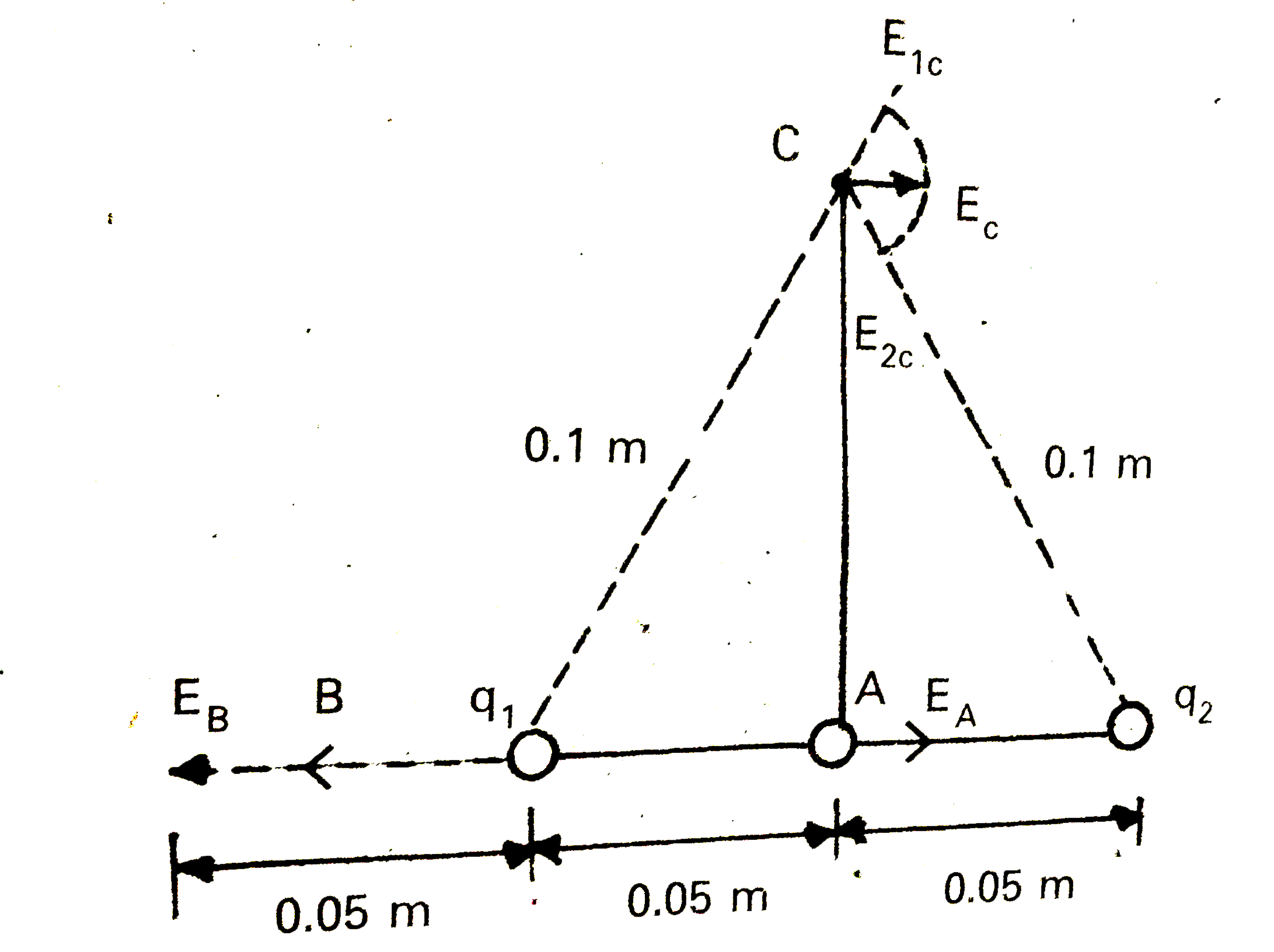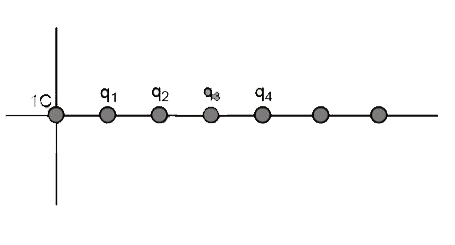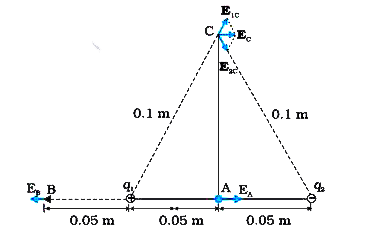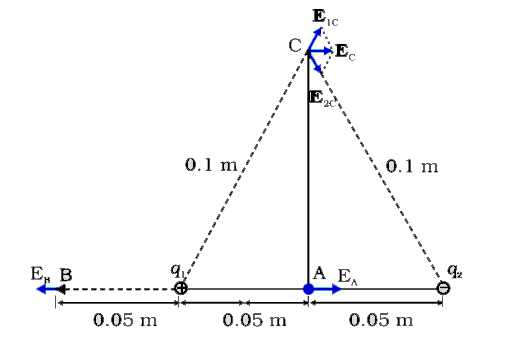Ten positively charged particles are kept fixed on the x-axis at points x=10cm, 20cm, 30cm, …, 100cm. The first particle has a charge 1.0×10−8C, the second 8×10−8 C, the third 27×10(−8)C and so on. The tenth particle has a charge 1000×10−8C. find the magnitude of the electric force acting on a 1 C charge placed at the origin. Solution in Tamil
F=F1+F2+F3+……..+F10=9×109×[1.0(0.10)2+8(.20)2+27(.30)2+………1000(1.0)2]10−8
=9×109×10−810−2[1+2+3+……10]
9×103×55=4.95×105N
Topper's Solved these Questions
- BOOK - HC VERMACHAPTER - ELECTRIC FIELD AND POTENTIALEXERCISE - Objective 28videos
ELECTRIC FIELD AND POTENTIAL
- BOOK - HC VERMACHAPTER - ELECTRIC CURRENT THROUGH GASESEXERCISE - Exercise23videos
ELECTRIC CURRENT THROUGH GASES
- BOOK - HC VERMACHAPTER - ELECTROMAGNETIC INDUCTIONEXERCISE - EXERCISE98videos
ELECTROMAGNETIC INDUCTION
Similar Questions
Mart out the correct options
View SolutionA discharge tube contains helium at a low pressure. A large potential difference is applied across the tube. Consider a helium atom that has just been ionized due to the detachment of an atomic electron. Find the ratio of the distance travelled by the free electron to that by the positive ion in a short time dt after the ionization.
View SolutionCalculate the dimensions of (a) ∫→E.d→l,(b)vBlanddΦ0dt. The symbols have their usual meanings.
08:42View SolutionFigure shows two charge particles on an axis. The charges are free to move. At one point, however, a third charged particle can be placed such that all three particles are in equilibrium.
(a) Is that point to the left of the first two particles to their rightm or between them?
(b) should the third paricle be positively or negatively charged?
(c ) Is the equilibrium stable or unstable?
 09:45View Solution
09:45View SolutionTwo point charges of +2×10−8C are placed 6 apart. Determine the force on a point charge of +1×10−8C placed at a distance of 5 cm from each of the two given charges.
03:03View SolutionTwo point charges q_(1) and q_(2) , of magnitude +10^(–8) C and –10^(–8)C , respectively, are placed 0.1 m apart. Calculate the electric fields at points A, B and C shown in Fig. 1.14.
View SolutionTwo point charges q1 and q2, of magnitude +10−8C and −10−8C, respectively, are placed 0.1 m apart. Calculate the electric fields at points A, B and C shown in Fig.
 02:06View Solution
02:06View SolutionTen charged particles are kept fixed on the X axis at point x = 10 mm, 20 mm, 30 mm, ......... 100 mm. The first particle has a charge 10−8 C, the second 8×10−8C, the third 27×10−8Cand so on. The tenth particle has a charge 1000×10−8C. Find the magnitude of electric force acting on a 1 C charge placed at the origin.
 04:03View Solution
04:03View SolutionTwo point charges q1andq2, of magnitude +10−8Cand−10−8C, respectively, are placed 0.1 m apart. Calculate the electric fields at points A, B and C shown in figure.
02:52View SolutionTwo positively charged particles fixed in place on an x axis. The charges are q1=1.60×10−19Candq2=3.20×10−19C, and the particle separation is R = 0.0200m. What are teh magnitude and direction of the electrostatic force →F12 on particle 1 from particle 2?
View SolutionTwo charged particles are attached to an x axis: Particle 1 of charge -4.00 xx 10^(-7) C is at position x = -5.00 cm and particle 2 of charge +4.00 xx 10^(-7)C is at position x = 10.cm. Midway between the particles, what is their net electric field in unit-vector notation ?
08:18View SolutionTwo charged particles lie along x axis as shown in Fig. The particle with charge q2=+8μC is at x = 6.00 m, and the particle with charge q1=+2μC is at the origin. Locate the point where the resultant electric field is zero.
 07:32View Solution
07:32View SolutionTwo point charges q1 and q2 of magnitude + 10−8 c and −10−8 c respectively are placed 0.1 m apart calculate the electric fields at points a, b and c
 08:18View Solution
08:18View SolutionTwo point charges q1 and q2 of magnitude + 10−8 c and −10−8 c respectively are placed 0.1 m apart calculate the electric fields at points a, b and c
 View Solution
View SolutionTwo point charges q1andq2, of magnitude +10–8Cand–10–8C, respectively, are placed 0.1 m apart. Calculate the electric fields at points A, B and C shown in Fig. 1.14.
 02:20View Solution
02:20View SolutionTwo point charges q1 and q2 of magnitude + 10−8 c and −10−8 c respectively are placed 0.1 m apart calculate the electric fields at points a, b and c
 01:39View Solution
01:39View Solution

